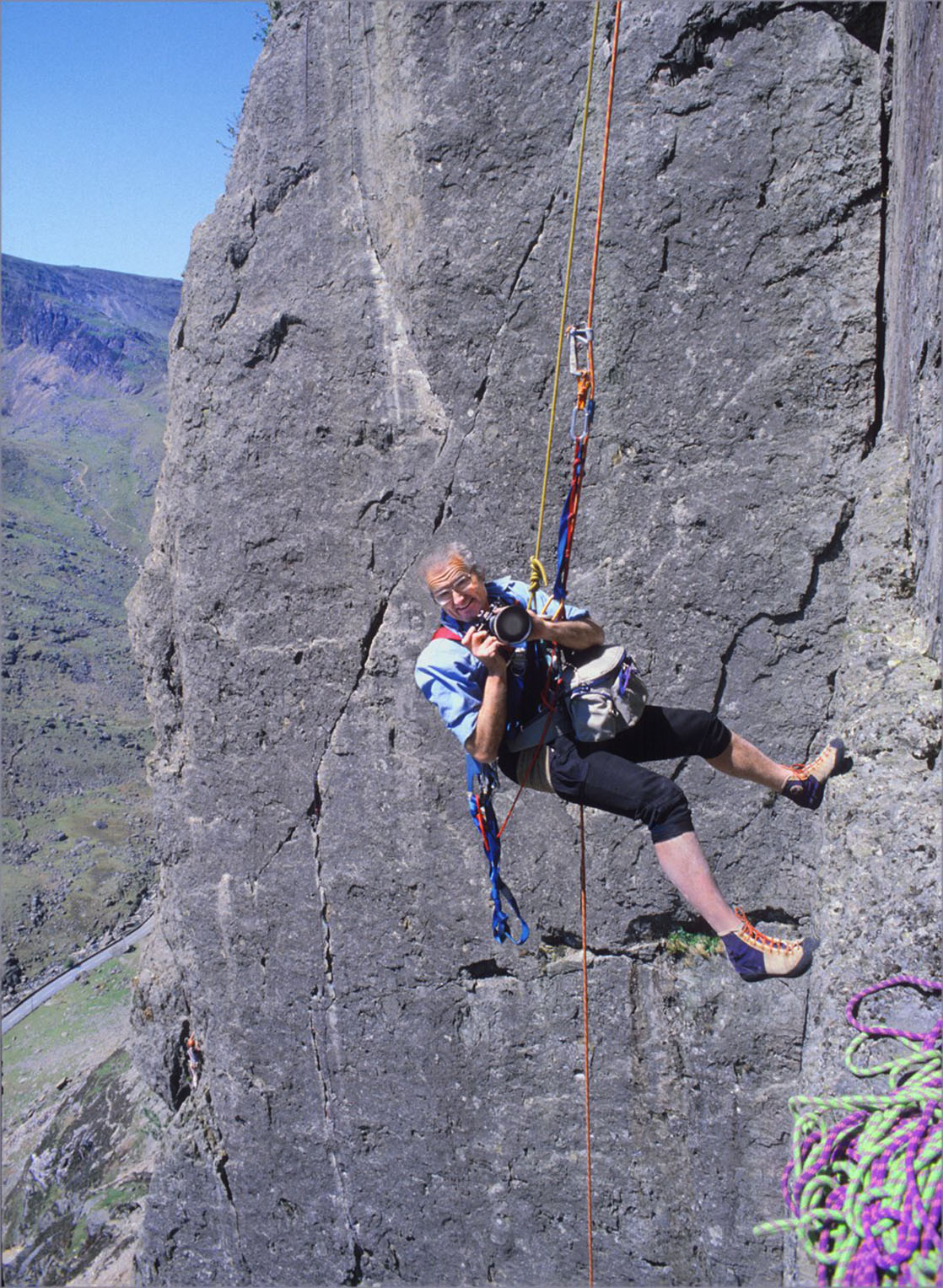P J S 1945 – 1954
I arrived at Wycliffe just five weeks after the first atomic bomb was dropped on Japan. I was nine so peacetime was confusing, but life at the Prep School, The Grove, was fun and tree climbing, den building and outdoor activities were encouraged. My vegetarian house at both Prep and Junior Schools was Sherwell, long since demolished, where the inspirational housemaster, A.A. ‘Bertie’ Robertson, was an international athlete and a serious mountaineer: in two years I had eagerly devoured every mountaineering book in his extensive library. He was a caver too and he lent us his gear to rig ropes and build tree houses in the tall Sherwell trees. On several Whole Hols’ – there were then no half-term breaks – he took us to the Mendips, to serious caves with tight squeezes, ladder pitches and underground rivers, which, for a twelve year old, were the ultimate adventures.
In 1950 I graduated to the Main School, to Springfield where the vegetarian catering was extremely good, a rare quality in those days of strict rationing. After the first year T.S.Dixon became the strict but kindly housemaster whose charming wife and three beautiful blonde daughters did much to enliven house morale. I enjoyed muddy rugger, played in the 2nd XV, and pulled strings to join the Boat Club early, finally becoming Captain of Boats.
My mother and I had escaped to Snowdonia during the London Blitz and although only four I was familiar with mountains and understood that when I was old enough I’d be able to climb them. Come Easter 1951, Bertie Robertson invited five Main School boys who had shown serious interest to join him in Wales for a two week climbing trip. I joined Bill Ayrton (H 1951), Jack Lewis ( J S 1955), and Tony and Richard Smythe (W 1951 & W 1955) who were the sons of the late Frank Smythe, the celebrated pre-war Everest mountaineer, author and photographer. The trip was informal and unstructured, as climbing should be, and under Bertie’s watchful eye we learnt from our mistakes. Tony and I discovered we had similar abilities on steep rock, and as rope partners soon found ourselves climbing quite serious routes. Each day’s rock climbing was completed with a strenuous bash ‘over the tops’. I was completely hooked.
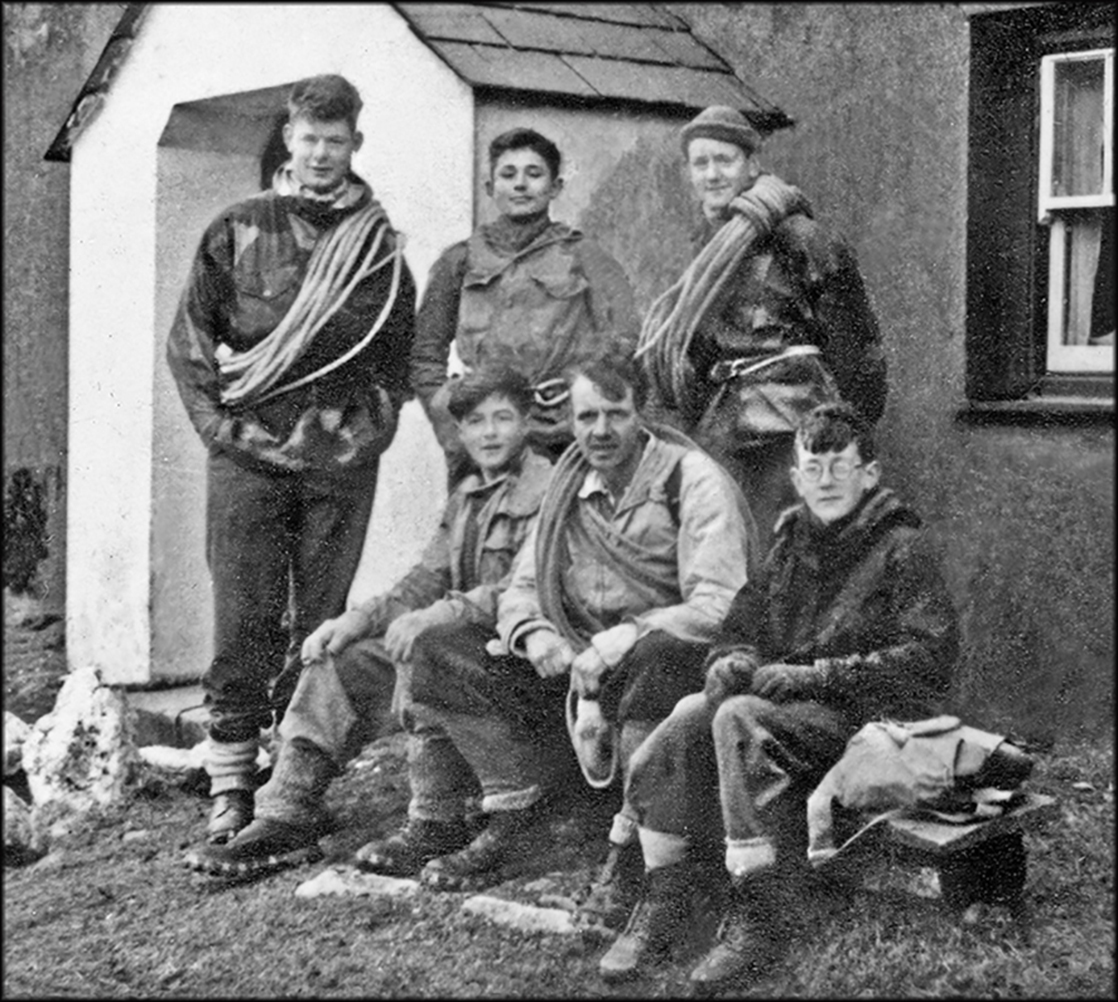
Wycliffe school boys climbing party at Gwern y Gof Uchaf farmhouse, Ogwen Valley - Easter 1951. L>R - Bill Ayreton, John Cleare, Tony Smythe, front : Jack Lewis, A.A 'Bertie' Robertson, Richard Smythe.
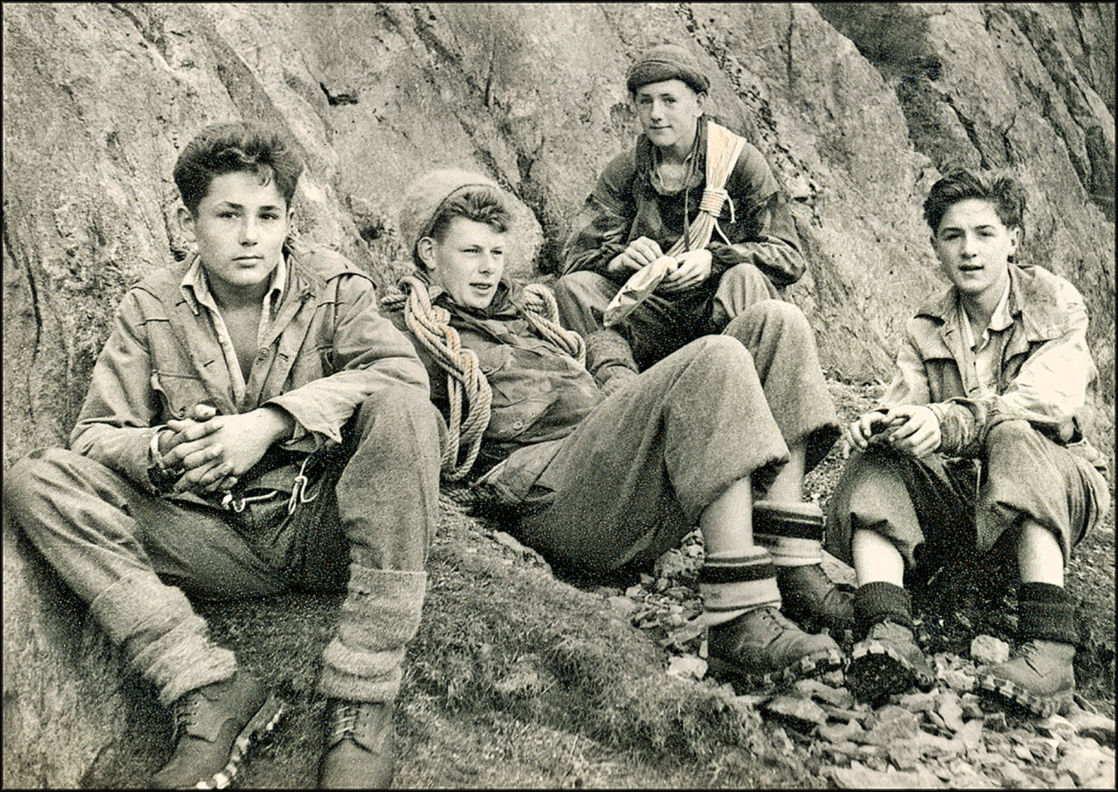
Young climbers relax at the foot of the Alphabet Slabs on Glyder Fach, Snowdonia. July 1951. L > R : John Cleare, Bill Ayreton, Tony Smythe and Jack Lewisi
Subsequently, most of every holiday was spent in the mountains of Wales, the Lakes or the Scotland, with Bertie the usual organiser; Tony had left school to become an RAF fighter pilot and Laurie Drury ( P J S 1958.) joined us. Jack and I, house mates, travelling on our motor bikes, had become proficient climbers, but the Moment of Truth arrived on Skye in 1953 when Jack and I witnessed a fatal mountain accident and single-handedly had to handle the traumatic outcome. Captivated by the mountains, we learnt the penalties they can exact. Jack never climbed seriously again but became a motor racing driver. I made a conscious decision and mountaineering became even more my first love.
National Service was a rite of passage, an experience I was determined to enjoy and I volunteered for the Royal Artillery. I grew up, gained a commission, travelled abroad and learnt to shoulder serious responsibility commanding my troop of soldiers, meanwhile on leave, Tony and I were able to climb in the Alps for the first time. But crucially I became enthralled with photography. On the advice of a professional Art Director I spent three years studying the subject at Guildford School of Photography whence I was headhunted by a glossy fashion magazine. Fleet Street was fascinating and I learnt to work under pressure and against deadlines only to be headhunted again a year later by a publisher to photograph a book of British Gardens “ If you can photograph mountains you can photograph gardens” I was assured.
I was now a freelance photographer and for some years corporate identity commissions and magazine assignments kept me busy. Especially interesting was a series of jobs behind the Iron Curtain in Eastern Europe, but I achieved a reputation for photographing major civil engineering projects such as the new Forth, Severn and Tagus suspension bridges and the building of the Victoria Line Underground system – rigorous assignments which would have been impossible without climbing and caving experience.
By this time I was climbing some of the harder ascents in Britain and the Alps. My pictures were already ‘known’ when in 1966 my book Rock Climbers in Action in Snowdonia was published. (republished in 2016) I’d persuaded Tony to write the text, it became a cult book in Britain and America and led to my being co-opted into the BBC TV ‘Climbing Circus’ as climbing cameraman and consultant. We made live TV broadcasts from such locations as the Old Man of Hoy, Holyhead, and even from the summit the Matterhorn itself to mark the Centenary of the 1865 first ascent. *
During the next few years I made several climbing and mountaineering films in Britain and the Alps for the BBC and others before another life-changing event occurred : I was asked to join the 1971 international attempt on the still virgin South West Face of Everest as climbing cameraman. After surviving tragedy and a ten day storm the attempt failed. It destroyed my marriage but subsequently I was recruited by Clint Eastwood as one of his two climbing cameramen for his 1974 movie Eiger Sanction, another epic experience.
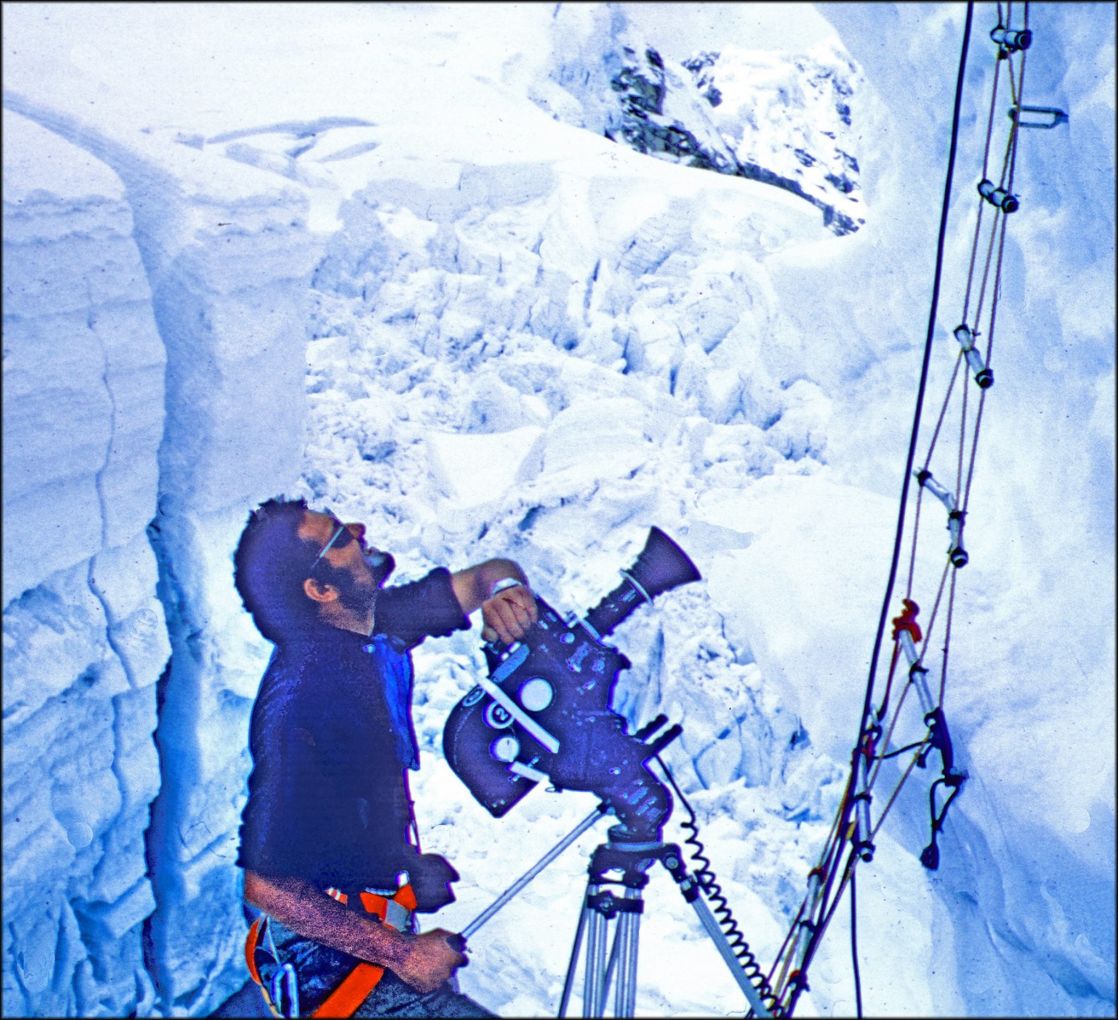
April 1971 : John Cleare in action in the Khumbu Icefall on Mount Everest during the International Everest Expedition to the S. W. Face.
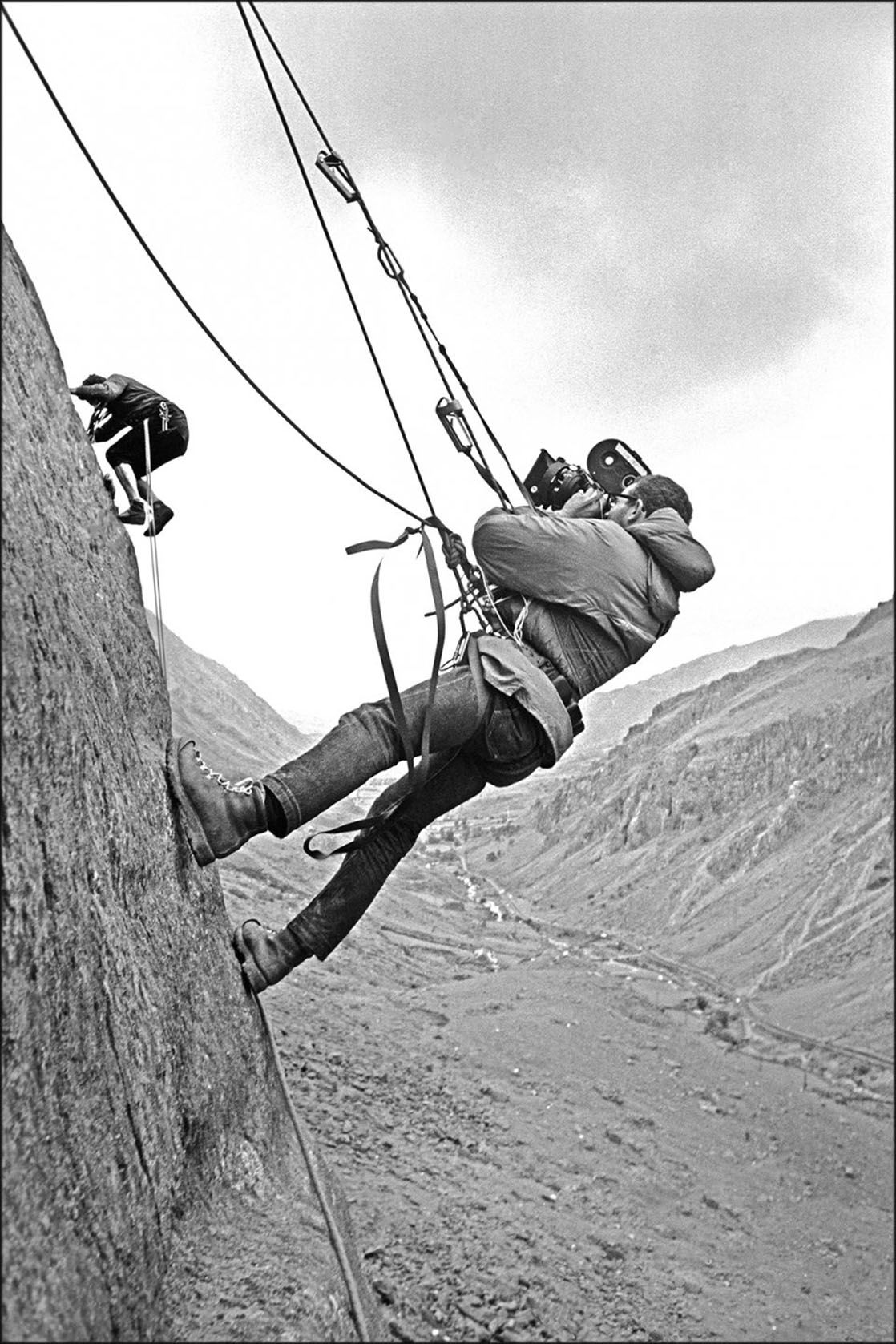
August 1974 : A production still shot by John Cleare on the Eiger North Face. Clint Eastwood himself in the process of doing one of his ‘stunts’- one that took a lot of raw courage.
Meanwhile the BBC had organised a specialist photo library for me – Mountain Camera – enabling my still pictures to sell worldwide, before sending me to East Africa on a two month assignment, the first of several, where I did some important climbs, enjoyed many adventures and escaped arrest in the Congo.
In 1973 I was invited to lecture in California and once again many doors opened: I became involved with the leading adventure business Mountain Travel who sent me back to Nepal, to Pakistan and then China, but not before I’d found my present wife in San Francisco. Now I found myself travelling widely, and over the next twenty years I completed lecture tours across North America and around Australia and New Zealand, while I shot and wrote numerous magazine and book assignments and even ‘travel clothing’ catalogues in mountains, deserts and wild places from the Karakoram to Kinabalu, from Patagonia to Peru. A journey to the Source of the Amazon, the first camel crossing of Australia’s Great Victoria Desert and Easter with the Sami folk in Lapland were among the more fascinating. Frequently there were opportunities for serious climbing and mountaineering and I led three expeditions to major Himalayan peaks, meanwhile returning to Nepal several times with one special friend and a sherpa cook to find and climb smaller, little-known peaks of around 6,000 metres because they looked interesting. Avoiding bureaucracy and publicity, this was mountaineering at its most fulfilling.
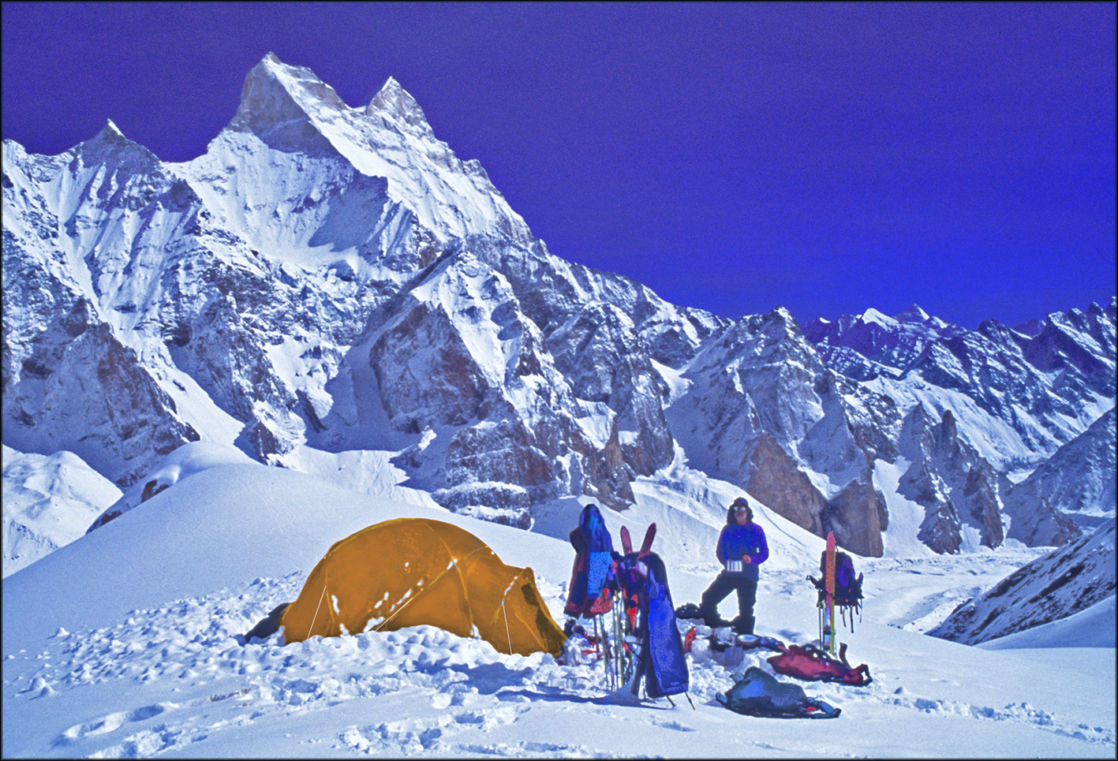
May 1994, I shot this picture of our Camp 2 on the North Face of Kedar Dome (22, 400 ft) above the Gangotri Glacier in Garhwal, Indian Himalaya, during our four-man attempt to make the first ski ascent of the mountain. The mountain beyond is Shivling – the holy mountain above the Ganges Source.
Over the years I’ve written a dozen books of my own and in partnership with other authors several dozen more. Holding in my hands a book that I’ve written, illustrated and perhaps designed myself, knowing it will outlast me, is almost as satisfying as climbing a virgin peak.
Known in climbing circles as “The Art of Climbing Down Gracefully“, I was almost fifty when I discovered Ski-Mountaineering. Since then I’ve ski-toured winter mountains all over the Alps and led expeditions to ski up Kedar Dome (6,832m.) in India and Muztagh Ata (7,546m.) in Chinese Xinjiang. Alas, like analogue photography, all that is now in the past; computers and digital cameras have opened exciting new possibilities and made life easy, while I must make do with pedalling my mountain bike over the downs of Wessex. But I have thousands of pictures to whet my memory so I can hardly complain.
In my final year at Wycliffe I discovered Edward Whymper’s ‘Scrambles amongst the Alps’, first published in 1871, arguably the finest mountaineering book ever written. It is perhaps ironic that during morning prep the Headmaster himself discovered me reading Whymper’s account of the first ascent of the Matterhorn instead of swatting for his maths test. I endured the fiercest reprimand I have ever experienced, I was forbidden to work in the library and threatened with demotion from the prefect’s list. But as it so happened, Mr Whymper’s sage words proved of far more worth than the Head’s boring maths prep, for on four occasions the Matterhorn has played an important part in my life.
